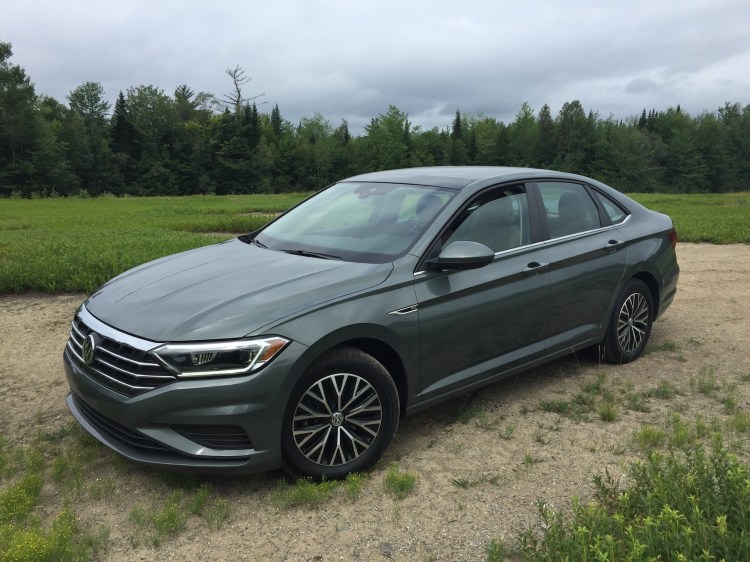Marketing types used to say, quietly, that if crossovers could hit 30 mpg on an everyday basis (many compacts and sub-compacts are on the cusp of that efficiency or already there) then the small-car market (with its diminished profit levels) would be all but toast in America, given the stability of fuel prices and other mitigating factors.
But with the new 2019 VW Jetta achieving the lofty 40 mpg goal, marketers may have to wonder if the compact car may yet have a larger role to play in our driving fleet.
Longer, wider, but actually lighter than its predecessor, the newest Jetta looks more like a Passat, feels like a Passat, and is roomy inside like its larger sibling, leaving one to think that this Jetta is a Passat that trimmed down at the gym.
However, the Jetta is not a Passat derivative but a totally new design shared with the latest Golf, Audi A3 and A4 sedans.
While styling is always a subjective item, the Jetta looks more streamlined, more polished, while apparently appealing to the design emphasis across the compact segment, as each new small entry is larger than the unit before it, making many of these cars as large as the former midsize sedans of 15 years ago.
The new Jetta starts at $18,545 with a six-speed manual and is one of the few small cars still featuring a three-pedal setup. This is a $650 jump in base price from the 2018 edition, but buyers gain more fuel economy (30/40 EPA mpg), more standard pieces and more safety, as well as a roomier interior.
There are now five trim levels, including a sporty R-line ($22,995). Our SEL-trimmed model starts at $24,415. Every version will use the 1.4-liter turbo-four engine, 147 hp. A new eight-speed automatic will generally be the default transmission for the majority of buyers.
The best part of the new Jetta is that it still drives like a Jetta. Steering feel and handling control remain a step above the majority of the competition, and the cabin is hushed at all speeds.
Power is plenty adequate from the smaller motor, with a torquey turbo-push capably managed by the 8-speed automatic so that the car at least feels like it hustles. With negligible engine braking from those multiple overdrive gears, the Jetta rolls along easily over hilly terrain – all of which aids fuel economy.
In our hands, the trip computer reported 40-plus mpg for the VW’s visit.
Despite the price increase, the Jetta still hits the segment sweet spot on pricing – right on top of the top-selling Civic and Corolla. At 185.1 inches, the Jetta is a tick longer than its rivals, and very close on wheelbase and weight. All those compact cars now ride very well and are pretty light on their feet.
VW thinks that the SEL trim will appeal to many buyers. It includes 10-color selectable ambient lighting, Beats Audio system w/XM, VW’s new selectable digital dash (think Audi), power sunroof, heated leatherette seats, heated mirrors, Start-stop with push-button ignition and access, adaptive cruise, electric parking brake, auto headlights, lane assist, rear view camera, forward braking assist, rear traffic alert, and a split folding rear seatback.
Rear seat space is very roomy. Heck, the whole cabin is spacious.
The downside: Inventory has been slow to reach dealers. Few leftover models are in showrooms, and Jetta sales are down 40 percent year-to-date.
The drop may mirror some of the Jetta’s more established competitors’ position in this year’s crossover-happy market, but is still a steeper decline than what a new generation model should generate.
We’ll check back in a few months and see if the latest Jetta, a better product, is making its case with Joe and Jane Consumer.
Send questions/comments to the editors.




